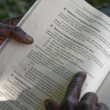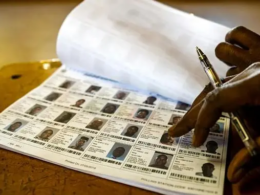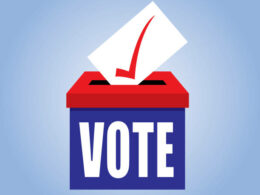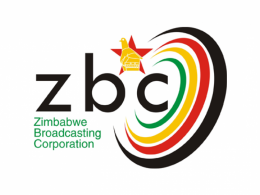The Bulawayo City Council (BCC) is responsible for providing treated water to its residents and institutions. The city draws its bulk water from six supply dams – Umzingwane, Insiza, Inyankuni, Mtshabezi, Upper Ncema and Lower Ncema. All the dams are located in Matabeleland South.
The city faces perennial water challenges due to the depleting water reserves forcing the local authority to implement various water management strategies.
Due to water shortages, the city often experiences an outbreak of water-borne diseases such as Diarrhoea and Cholera. Recently, the city recorded over 1000 cases of diarrhoea.
Water Purification Process
The City of Bulawayo Principal Chemist, Clout Moyo explains the steps taken by the local authority in treating water.
Laboratory section
“The lab monitors the water from the dams which is the source supply of water. As you may be aware, we receive our water from six supply dams which are located on the Eastern side of the city and this water is pumped to two treatment plants which are criterion water works and Ncema water works. Criterion water works being the largest treatment plant,” said Moyo.
He said at the laboratory, they monitor the raw water from the dams so that they determine its quality and suitability for treatment.
“Actually, we want to determine treatment needs of that water before it is even treated, we have to determine the chemicals that we have to put in the water.
Before we treat the water, we actually monitor the quality of chemicals that we have from suppliers and monitor the chemicals by determining the quality of those water treatment chemicals, to determine their suitability for water treatment”.
Treatment Plant
When the water arrives at the treatment plant, it undergoes several stages which include filtration, coagulation, and disinfection.
“At the treatment plant, we monitor the performance of each unit, unit by unit, all those stages are monitored to make sure that the water is effectively treated,” said Moyo.
Reservoirs
When the water leaves the treatment plant, it goes to reservoirs, what they call service reservoirs
“At the service reservoirs, water is stored there and then it gravitates to consumer points to residential areas and the quality of water coming out of reservoirs is also monitored to make sure that there is consistency in terms of quality from the time it left the treatment plant up to the time it leaves the reservoirs.
“From the reservoirs, water gravitates to various consumer points throughout the city and at the consumer point we have sampling points, a number of sampling points close to 100 sampling points that we monitor on a regular basis to make sure that at the sampling point when water arrives there it is of acceptable quality, for example, the residual chlorine of the water should be between point 2 and point 5miligrams per litre.”
He added that there are several parameters where they monitor water including bacteriological quality.
Appearance of the water
“As Bulawayo residents, we note that people don’t complain about the quality of water throughout the city. We have certain points where we find that people complain about water quality, sometimes it is because of a number of reasons, it could be an end cap where water flows from the pipes and sometimes they are bursts, because of those bursts sometimes there is an accumulation of mud when a burst occurs,” said Moyo.
He said the mud normally accumulates at the end of a pipe, “those places sometimes get flushed, our plumbers flash those points to clear water so that when it reaches the consumer it is clean.”
“Sometimes it will be because of leaks where there is infiltration, all those things will cause water disturbances in terms of quality, otherwise when water leaves the treatment plant it will be acceptable quality, it will be meeting SARS standards,” said Moyo.
He added that when they receive complaints on the quality of water, they attend and collect samples and test them for free to ensure that water is safe.
“ As a city, we do not only receive water from the dams only, we have water coming from our boreholes at Nyamandlovu and Epping Forest, that water is also tested at the laboratory, its quality is monitored, that water is also treated, it is disinfected, we do not add coagulants to this water because the water coming from underground is not filtered by the soil, so what we only do, we disinfect it at Epping forest there at Nyamandlovu and we also disinfect again the water at CowdrayPark, then we pump that water to Magwegwe reservoir where it blends with that from criterion so that we lower the hardness of water so that the water is acceptable in terms of consuming the water and also in terms of washing because it should not be hard, it should be fairly soft, so we blend that water with the one from criterion,” said Moyo.
“The bulk of that blending comes from criterion, sometimes you find that our water has a number of challenges, you find that the water is muddy, such water we normally ask residents to just use that water for other purposes, gardening, put it in the bucket sometimes it settles, you can even use it in the system when it is settled and throw away that very muddy water.”
Moyo said the milky water is due to pressure build-up in the pipes.
“When our pipelines are empty, suppose there is water shedding, when water is finally restored, that air within the pipes dissolves in the water to make the water milky and that water normally clears from the bottom of the glass upwards,” he said.
“Then you also find out that water sometimes smells, such water should not be consumed, we urge residents to report such incidents to our call centre s that at least we attend to such problems or as residents of Bulawayo, you are urged to boil water if you find that you are not satisfied by the quality of the water otherwise our water is safe for drinking.”








